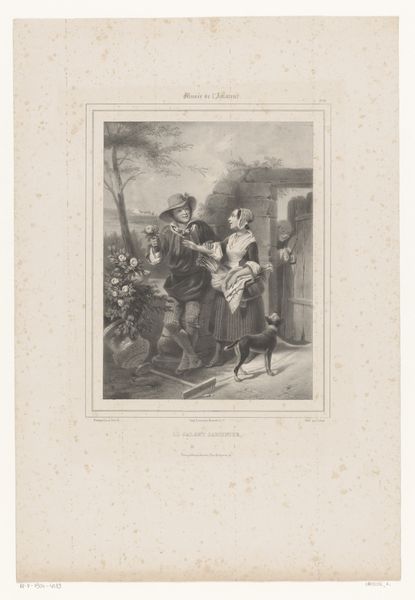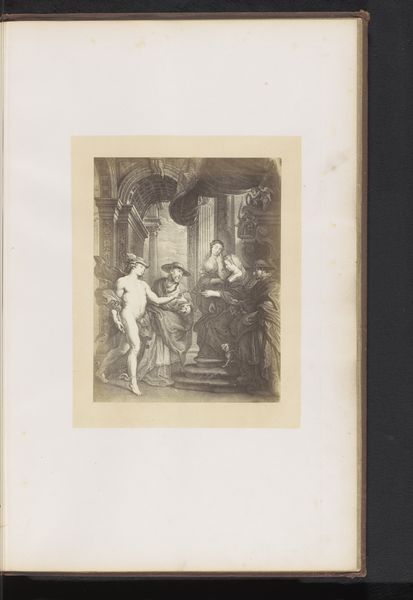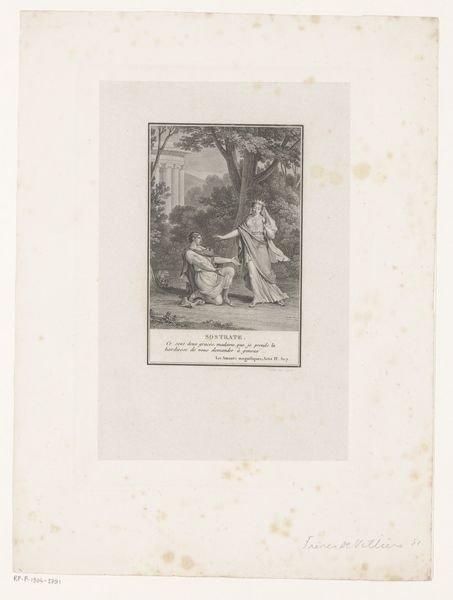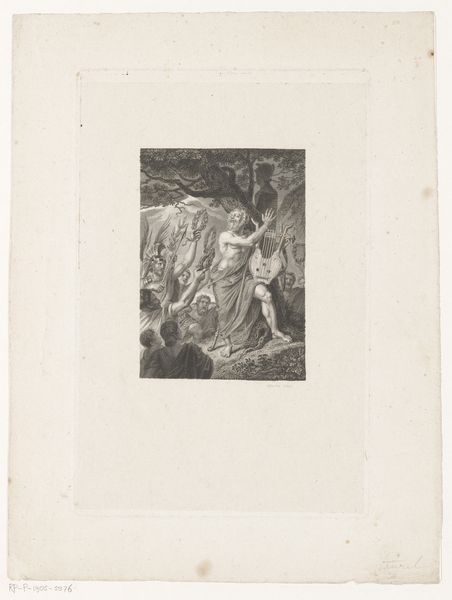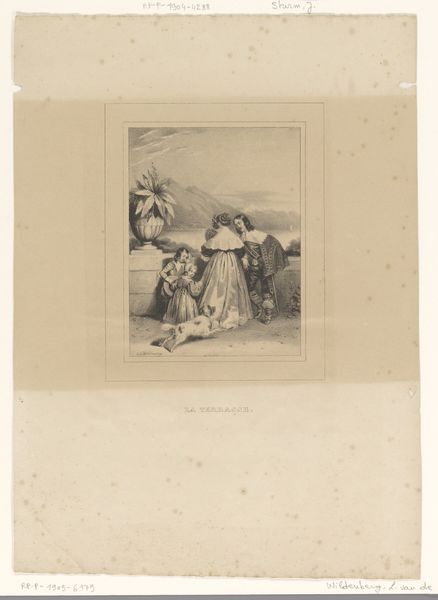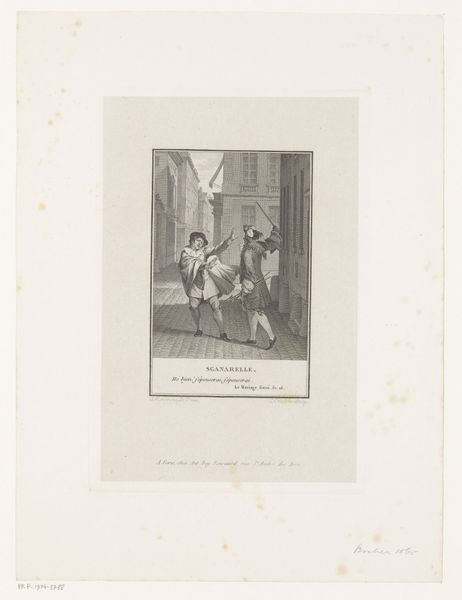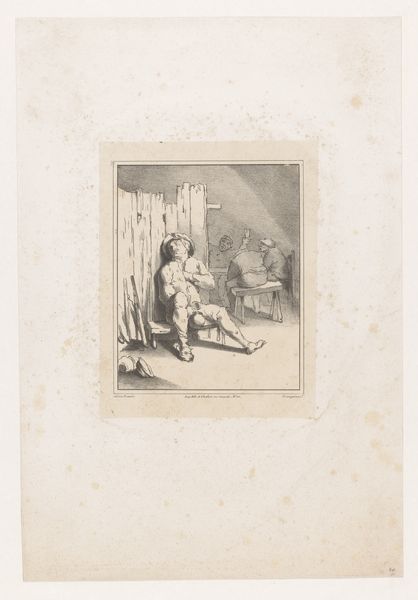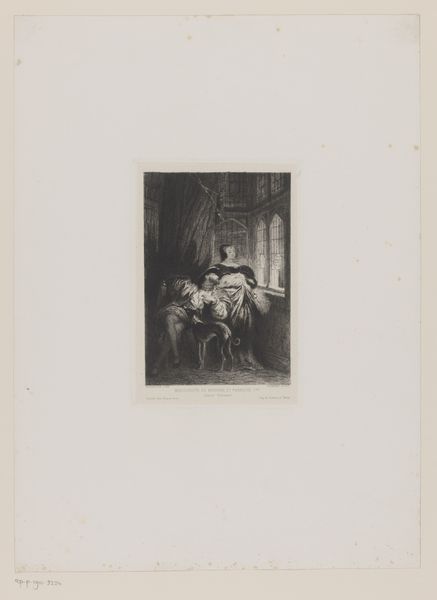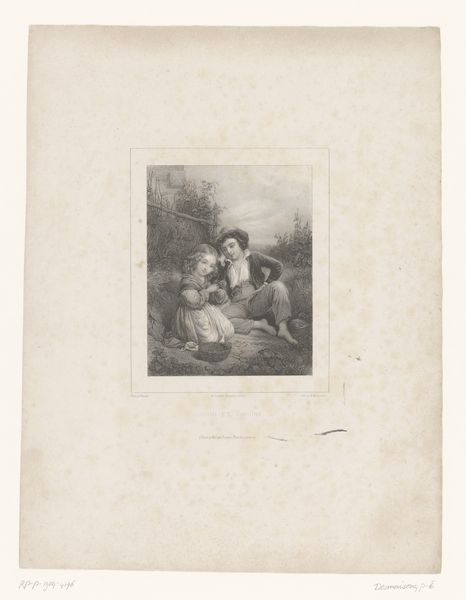
Rafaël portretteert een moeder met kind op de deksel van een vat terwijl omstanders toekijken 1839 - 1856
0:00
0:00
print, engraving
#
portrait
#
narrative-art
# print
#
group-portraits
#
history-painting
#
engraving
Dimensions: height 226 mm, width 186 mm
Copyright: Rijks Museum: Open Domain
Editor: This engraving, made by L. Linsen between 1839 and 1856, depicts, as the title suggests, Raphael portraying a mother and child. What strikes me is how the crowd observes this moment; it makes me think about how artists were perceived and how art was consumed back then. What's your interpretation? Curator: That's an astute observation. Consider how art, especially history painting and portraiture, was deeply embedded in social narratives and power dynamics during the 19th century when this engraving was made. These prints often circulated widely, shaping public perception of historical events and artistic figures. The composition almost seems staged, doesn’t it? Editor: Yes, it does. Like a theatrical production of everyday life! Curator: Exactly. The scene suggests the public role of the artist, showcasing Raphael's talent as something witnessed and celebrated by the community. Ask yourself, how does this depiction contribute to the romanticized view of the artist prevalent at the time? Was this intended as pure reportage? Editor: Perhaps it reinforced a particular idealized vision of artistic creation and the artist's status in society. Sort of like early art propaganda? Curator: In a way, yes. Consider it as the creation of an artistic persona for the masses, contributing to an almost celebrity-like status. It encourages viewers to internalize this vision, solidifying art’s socio-political function. Editor: I never thought about it in terms of image construction. This really shifts my perspective on the role of art back then and even today. Curator: Exactly! Seeing art through this lens, we uncover hidden dimensions. Understanding context really is key.
Comments
No comments
Be the first to comment and join the conversation on the ultimate creative platform.
